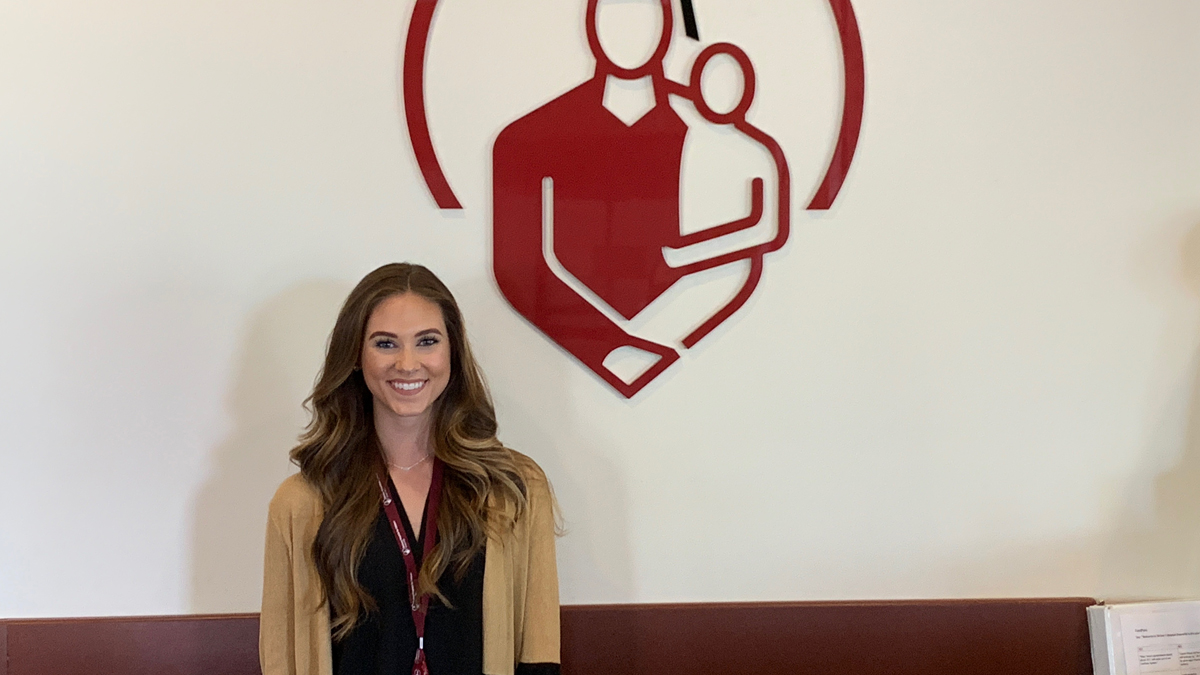A poised dance instructor beckoned her 7-year-old pupil to her side. The teacher glided her hand over the spine of the previously twirling tiny dancer. After a quick examination, her suspicions for the cause of an awkwardly fitting leotard were confirmed. The observant eyes of a dance teacher would start Sydney Sill on her lifelong journey with scoliosis – a musculoskeletal disorder that causes an abnormal lateral (sideways) curving of the spine or backbone, according to Shriners Hospitals for Children.
However, the team of experts at Shriners Hospitals for Children in Greenville are flipping the tables on scoliosis. Equipped with a team of four leading pediatric and orthopedic surgeons with more than 90 years of collective experience performing more than 100 surgeries a year, a commitment to care leading to zero readmissions or unplanned returns for spine patients to the operating room with zero percent of patients experiencing wound complications, the hospital is improving the lives and mobility of hundreds of young patients in the Upstate and beyond.
Sill, one of the many patients who has grown up with Greenville Shriners Hospital faces scoliosis with unbridled optimism, inspiration and selflessness.
At the age of 8, Sill came to Shriners Hospital under the care of Dr. Pete Stasikelis, director of the spine program at Greenville Shriners Hospital, for spinal care and bracing.
“It has always been a joy to be Sydney’s doctor and work with her. Sydney is amazing. She is so focused on other people,” said Dr. Stasikelis.
After four years of support bracing, Sill hit a growth spurt, causing the angle of her spine to increase, leading to spinal fusion surgery two days after her 12th birthday.
After an intense surgery with a year-long recovery process, many tweens would become sullen over their predicament; however, Sill found inspiration to look beyond her own situation by keeping her hands and mind active with a small jewelry making set. While stringing together beads for other girls in the hospital, Sill would begin her work toward becoming an ambassador for Shriners and a role-model for other children with physical disorders.
“I got really involved, and I thought it was awesome to be able to share what I was going through with others who were going through the same thing. I just developed this passion for children with disabilities, and I thought that they were so special,” said Sill.
Sill joined the Miss America program and became Miss South Carolina Teen in 2012. In 2017, she was first runner-up in the Miss South Carolina pageant.
“My platform as a teen contestant was overcoming obstacles, and I shared my story about going through scoliosis and overcoming it and trying to inspire others to keep persevering. I actually danced for my talent, so it proved that I was able to dance better than before my surgery and be successful at it,” said Sill.
Sill continues to dance and now teaches her own toe-tapping students and is a graduate of Clemson University.
Now, when Sill walks through the whimsical and colorful halls of Greenville Shriners Hospital, past life-size statues of exotic animals, it is not as a patient but as an employee of the marketing and public relations department.
“I have benefited so much from this hospital and being able to share how much they have affected my life while being able to work in a department that brings light to all that Shriners does is so rewarding,” said Sill.
Moving forward, Sill hopes to continue implementing programs at Greenville Shriners Hospital that offer support for patients of scoliosis and their families.
If two words could describe Sydney Sill, they would be “active inspiration.”
An Alternative to Spinal Fusion Surgery
Treatments for scoliosis can vary from casting and bracing to help improve the curve of the spine to more complex treatments such as spinal fusion surgery. This is often a challenging and long journey for rambunctious kids.
However, there is an alternative, non-invasive method to treating scoliosis that may prevent patients from undergoing spinal fusion surgery – Schroth.
The origins of the treatment stem from the work of Katharina Schroth and her physical therapist daughter, Christa Lehnert-Schroth, in 1920s Germany. The treatment process involved an in-patient clinic with an immersive, around-the-clock focus on treating scoliosis patients through exercise, diet and life skills.
According to Marissa Muccio, P.T., Pediatric N.D.T and C2 certified therapist at one of the largest Schroth clinics on the East Coast, the results of the treatment at that juncture in medical history were quite impressive and preceded many modern methods critical to treating scoliosis today, such as X-rays and surgery.
Throughout the 20th century, the method spread throughout Europe, resulting in six institutions offering training for physical therapists.
While Schroth has evolved over time, the method is still used today and has been advancing throughout the United States for the past 10 years.
The modern Schroth method grows and adapts with the individual needs of each patient, depending on age, mobility and the body’s biomechanical response. For teenagers, treatment may entail high-impact sports, while elderly patients may use gardening as a way to stretch and rotate their spine.
By assessing each patient’s individual curves, biomechanics and daily activities, a specific program of alignment and de-rotation exercises can be established.
Schroth is a holistic approach to improving the lives of patients with scoliosis, no matter their age or range of mobility.
“Working with Schroth has been an absolutely amazing journey, with some amazing, life-changing, surgery-saving outcomes in the adult population,” said Muccio.
By Victoria Pujdak
